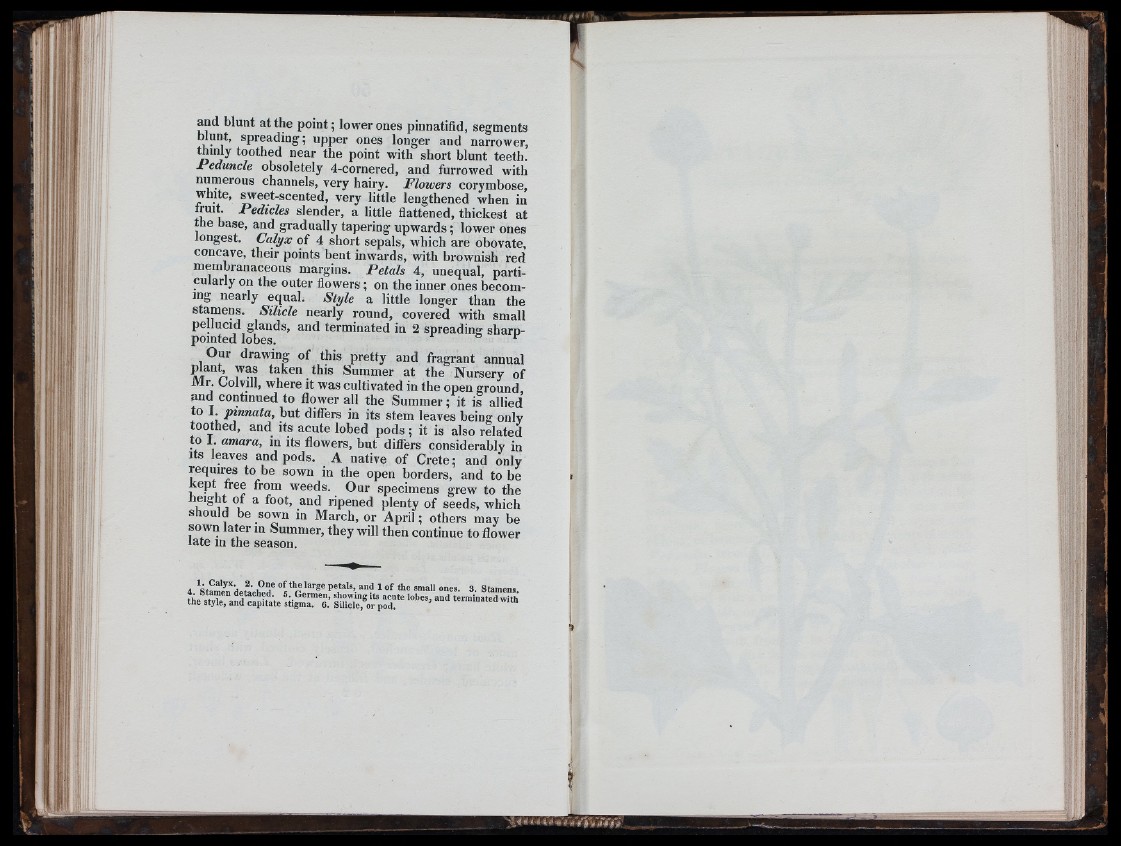
ih,ij
A' .
r i'j
J ■ !
■ fi'
r \i'’i ■
9 /ii
I'M
&
and blunt at the point; lower ones pinnatifid, segments
blunt, spreading; upper ones longer and narrower,
thinly toothed near the point with short blunt teeth.
Peduncle obsoletely 4-cornered, and furrowed with
numerous channels, very hairy. Flowers corymbose,
white, SM'eet-scented, very little lengthened when in
truit. Pedicles slender, a little flattened, thickest at
the base, and gradually tapering upwards; lower ones
longest. Calyx of 4 short sepals, which are obovate,
concave, their points bent inwards, with brownish red
membranaceous margins. Petals 4, unequal, particularly
on the outer flowers; on the inner ones becoming
nearly equal. Style a little longer than the
stamens. Silicle nearly round, covered with small
pellucid glands, and terminated in 2 spreading sharp-
pointed lobes. O f
Our drawing of this pretty and fragrant annual
plant was taken this Summer at the Nursery of
Mr. Colvill, where it was cultivated in the open ground
and continued to flower all the Summer; it is allied
to I. pinnata, but differs in its stem leaves being only
toothed, and its acute lobed pods ; it is also related
to 1. amara, in its flowers, but differs considerably in
Its leaves and pods. A native of Crete; and only
requires to be sown in the open borders, and to be
kept free from weeds. Our specimens grew to the
u 1J r ^ ripened plenty of seeds, which
should be sown in March, or April; others may be
sown later m Summer, they will then continue to flower
late m the season.
4 Stam/n de ta clPT Stamen,,
tke® tyTeTand S t e f e T p r d ! * ® terminated with